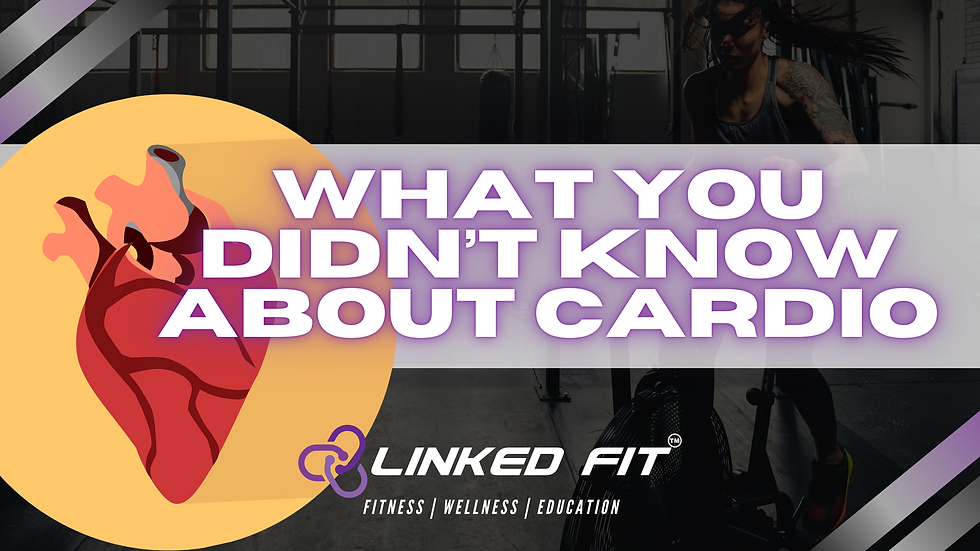Fascia Health
- Linked Fit

- Sep 23, 2020
- 6 min read
The importance of fascial health has been at the forefront of recent research, and there is an evolution taking place in how fascia is seen in health & wellness. While A.T. Still may have seen the importance of the fascia or connective tissue, over 100 years ago, that is not how fascia has been treated throughout recent years. For a long time, fascia was considered just the tissue that “packaged” more important structures. Little consideration was given to how it functions or what the ramifications were for disregarding its importance. Current thinking and clinical practices are beginning to move away from the “packaging” model to a 3-d model of continuity.
“Fascia is the place to look for the cause of disease and the place to consult and begin the action of remedies in all diseases. By its action we live and by its failure we die. The fascia is the ground in which all causes of death do the destruction of life.” (A.T. Still 1902)

What is Fascia?
The fascial system permeates the entire body, incorporating adipose tissue, nerve sheaths, tendons, ligaments, muscular sheaths (endomysium, perimysium, epimysium), periostea, retinacula, joint capsules, and meninges. 2,3 Another way of describing the fascial system: “The fascial system interpenetrates and surrounds all organs, muscles, bones and nerve fibers, endowing the body with a functional structure, and providing an environment that enables all body systems to operate in an integrated manner.” 2 Simply stated, fascia covers everything, is everywhere, and is how bodily systems work together.

Fascia is composed of crisscrossed fiber layers. These layers are interconnected through cellular specialization and the extracellular matrix. 4-8 In response to stimuli, cellular specialization and differentiation can occur in adaptation to the stimulus. As mechanical loading (i.e.tension or compression) of the fascia occurs, a cellular architectural principle distributes the load throughout the system. This principle is called tensegrity. In order to keep from overloading the tissue in any one specific area, a pre-stressed structural network, composed of opposing tension and compression elements. This network is able to establish a mechanical force balance, meaning that any force is spread throughout the system and no individual area has to bear the full force.9-11 To help with visualization, the Golden Gate Bridge is an example of an architectural structure that utilizes tensegrity. At the heart of how tensegrity works within the body are the communication and signaling system, mechanotransduction. Cellular connection via the extracellular matrix allows for rapid signaling throughout the connective tissue system. Mechanotransduction allows for cellular adaptations through physical and chemical signaling. This means that rapid physiological adjustments can be made, making connective tissue very receptive to external stimuli.

How Can I Manipulate Fascia?
The receptivity of fascia has made it a target for numerous forms of treatment throughout history. Massage, instrument assisted soft tissue mobilization (Graston or “scraping), cupping, foam rolling, forms of acupuncture, rolfing, are all examples of techniques clinicians use to improve fascial function. For the purposes of this article forms of self-myofascial release will be the focus, mainly foam rolling. Foam rolling is a treatment that can be performed at home, is cheap, and easy to learn, all while providing similar benefits to some of the more involved techniques mentioned previously.

The use of foam rollers has demonstrated an increased range of motion, decreased myofascial pain, improved parameters of recovery exercise-induced muscle damage, along with varying improvements in athletic performance.12-14 Numerous theories exist on how these improvements are made in fascial tissue function, but they all revolve around factors that create a decrease in fascial function. Tissue hydration, cellular response, adhesions, scar tissue, aging, injury, neurological control, and immobility are a few of the factors associated with a decrease in fascial function. The use of foam rolling creates compression and shearing of fascial layers creating a cellular and neurological response, resulting in potential decreases in fascial stiffness, increased tissue hydration, and decreased pain perception.
Fascial stiffness can cause a decrease in function to many systems within the human body. Recent research has started to link fascial stiffness to tumor growth.15 Demonstrating the importance of maintaining a properly functioning fascial system. Here is an easy daily action plan to help keep your fascia healthy.
Action Plan
Move Often: The important part of this is that you take your joints and tissues to the end of your comfortable range of motion multiple times throughout the day. A deep squat hold for an accumulated 2-5 minutes daily is a great place to start with this practice. Anytime you are sitting for long periods, take periodic breaks and move through all your joints full range of motion. For the deep squat hold, place your feet in a shoulder-width position and squat as deep as you can. Hold this position for as long as you can before returning to a standing position. It is important to relax and breathe normally while in the deep squat. Repeat this as many times as needed throughout the day to reach your allotted time goal.
Massage: Foam rolling makes an integral part of the warm-up (Preparation: Phase 1) as it has direct links to improved range of motion and muscular performance. Foam rolling can also be beneficial post-workout as research suggests decreased markers of muscular fatigue and muscle soreness when foam rolling is included post-training.16,17 When using the foam roller to massage a muscle group it is important to brace and utilize the optimal technique. (Article: Creating Internal Tension) Use a slow pace and pay attention to areas of increased tension and soreness. Those areas will become the areas of focus for the roller massage. Accumulate time massaging the muscles but don’t go much over 1 minute per group. Too much of a good thing can become a bad thing, especially before activity.
Stay Hydrated: Drinking an adequate amount of water throughout the day is vital to keeping your fascia optimally working. When the body is hydrated optimally the fascia system functions through a better motion capacity. The fascia is known to be a further liquified state, thus making movement provided through a sense of ease.
Reduce Stress: Developing a self-care routine to reduce stress will not only help you feel better mentally, but your myofascial health will be improved as well. Mindfulness, exercise, and time outside are great ways to improve stress levels. (Introduction to mindfulness? Article: A Mindful Approach to Improve Health)

References:
Still AT. The philosophy and mechanical principles of oteopathy. Kansas City, MO: Hudson-Kimberly Publication Co; 1902.
Adstrum S, Hedley G, Schleip R, Stecco C, Yucesoy CA. Defining the fascial system. J Bodyw Mov Ther. 2017;21(1):173-177.
Zugel M, Maganaris CN, Wilke J, et al. Fascial tissue research in sports medicine: from molecules to tissue adaptation, injury and diagnostics: consensus statement. Br J Sports Med. 2018;52(23):1497.
Armstrong C. The architecture and spatial organization of the living human body as revealed by intratissular endoscopy - An osteopathic perspective. J Bodyw Mov Ther. 2020;24(1):138-146.
Langevin HM. Connective tissue: a body-wide signaling network? Med Hypotheses. 2006;66(6):1074-1077.
Stecco C, Schleip R. A fascia and the fascial system. J Bodyw Mov Ther. 2016;20(1):139-140.
Tozzi P. Selected fascial aspects of osteopathic practice. J Bodyw Mov Ther. 2012;16(4):503-519.
Tozzi P. A unifying neuro-fasciagenic model of somatic dysfunction - Underlying mechanisms and treatment - Part II. J Bodyw Mov Ther. 2015;19(3):526-543.
Ingber DE. Tensegrity and mechanotransduction. J Bodyw Mov Ther. 2008;12(3):198-200.
Levin SM, Martin D-C. Biotensegrity. In: Fascia: The Tensional Network of the Human Body.2012:137-142.
Tadeo I, Berbegall AP, Escudero LM, Alvaro T, Noguera R. Biotensegrity of the extracellular matrix: physiology, dynamic mechanical balance, and implications in oncology and mechanotherapy. Front Oncol. 2014;4:39.
Behm DG, Wilke J. Do Self-Myofascial Release Devices Release Myofascia? Rolling Mechanisms: A Narrative Review. Sports Med. 2019;49(8):1173-1181.
Beardsley C, Skarabot J. Effects of self-myofascial release: A systematic review. J Bodyw Mov Ther. 2015;19(4):747-758.
Cheatham SW, Kolber MJ, Cain M, Lee M. The effects of self-myofascial release using a foam roller or roller massager on joint range of motion, muscle recovery, and performance: a systematic review. International Journal of Sports Physical Therapy.10(6):827.
Langevin HM, Keely P, Mao J, et al. Connecting (T)issues: How Research in Fascia Biology Can Impact Integrative Oncology. Cancer Res. 2016;76(21):6159-6162.
D’Amico A, Gillis J. Influence of foam rolling of recovery from exercise-induced muscle damage. Journal of Strength & Conditioning Research. 2019;33(9):2443-2452.
Drinkwater EJ, Latella C, Wilsmore C, Bird SP, Skein M. Foam Rolling as a Recovery Tool Following Eccentric Exercise: Potential Mechanisms Underpinning Changes in Jump Performance. Front Physiol. 2019;10:768.











Comments